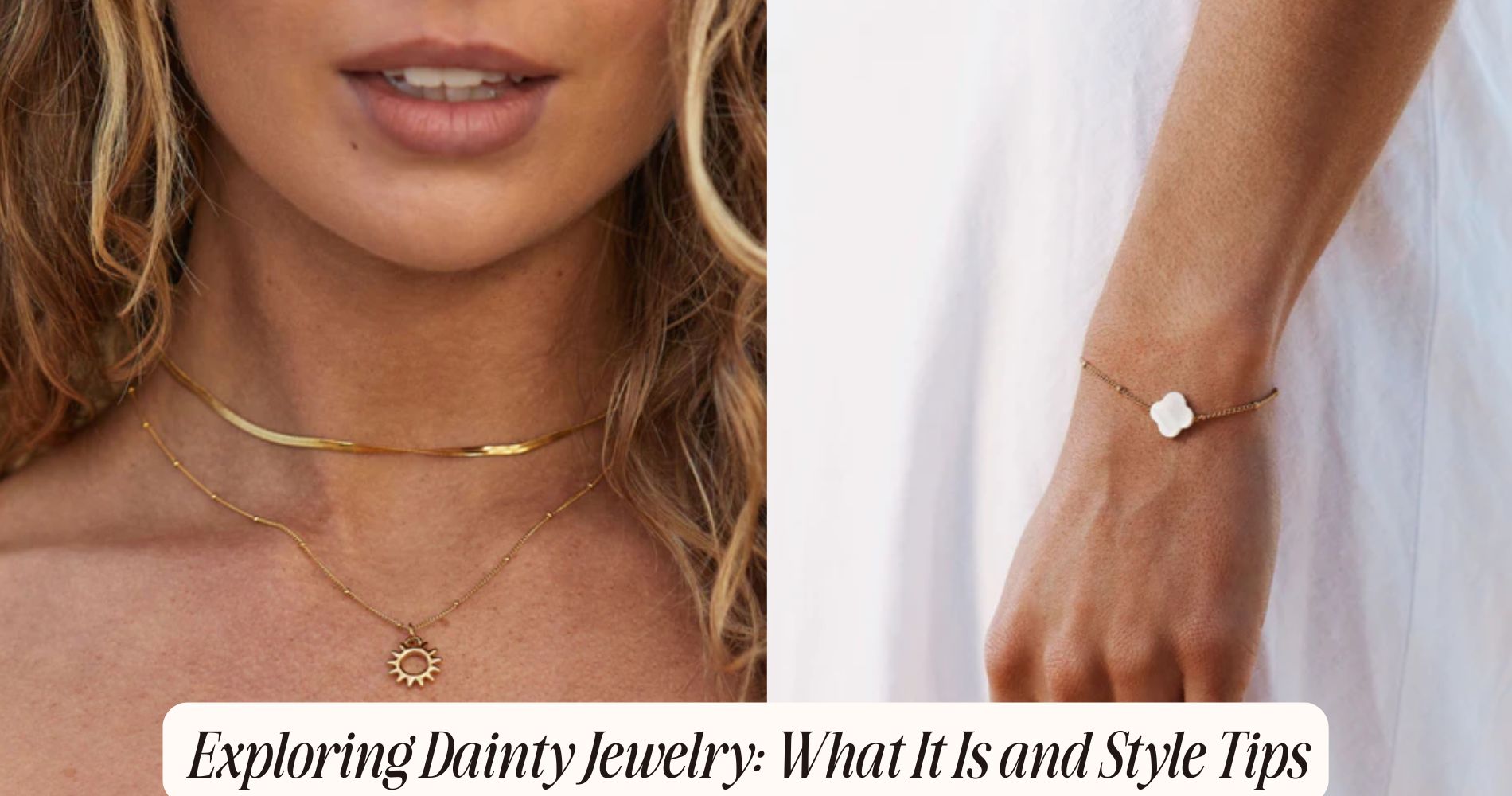
What is October's Birthstone? Discover Its Meaning and Significance
What is October's birthstone? October's birthstone is the opal, celebrated for its mesmerizing play-of-color, a result of the unique arrangement of its silica structure. This captivating gemstone has fascinated civilizations throughout history, symbolizing hope and creativity. The ancient Romans revered opals as 'Cupid's stone,' while medieval cultures associated them with luck and protection. Opals are also known to represent loyalty, emotional balance, and transformation across various societies. Spiritually, they are believed to foster healing and aid in self-acceptance. Proper care is essential to preserve an opal's beauty, so handle it with care. If you're intrigued by the opal's rich history and care tips, explore more in our Waterproof Jewelry collection.
Overview of Opal
Opal, the primary birthstone for October, is renowned for its unique play-of-color phenomenon, where light refracts within its silica structure, creating a fascinating spectrum of hues. This optical effect arises from the arrangement of silica spheres in the opal's composition, which can vary in size and spacing, leading to the formation of different opal varieties.
You'll find several types of opals, such as precious opal, which exhibits vibrant color displays, and common opal, which typically lacks this optical effect. Fire opal, known for its warm yellow to red tones, and boulder opal, which contains host rock, are additional varieties that showcase the mineral's diversity.
Each variety undergoes a unique opal formation process, primarily occurring in sedimentary environments where silica-rich solutions seep into voids and fractures in rocks. As the solution evaporates, silica crystallizes, forming opal over time.
The structure and environment during formation greatly influence the resulting opal's characteristics. Understanding these processes not only enhances your appreciation for opal but also aids in identifying and valuing different types of this fascinating gemstone.
Historical Significance
Throughout history, opal's enchanting colors have captured the imagination of various cultures, leading to its significant role in mythology, art, and jewelry. As the October birthstone, opal has been associated with numerous historical legends. For instance, the ancient Romans believed that opals bestowed the power of foresight and were symbols of hope. They referred to opals as 'Cupid's stone,' associating them with love and passion.
In medieval Europe, opals were thought to bring good luck and protect wearers from disease. Importantly, some cultures linked opals to the supernatural, believing they held the spirits of the earth. This mystical view persisted into the 19th century when opals were considered talismans for creativity and inspiration, often worn by artists and writers.
Moreover, opal's unique play of color sparked fascination among jewelers, inspiring intricate designs in various art movements. The stone's rarity and beauty have led to its prominence in royal collections, further solidifying its historical significance.
Cultural Associations
The cultural associations surrounding opal reveal its multifaceted symbolism, often representing loyalty, faithfulness, and emotional balance across various societies. In many cultures, opal's unique play-of-color is linked to the idea of transformation and adaptability, signifying the wearer's ability to navigate life's changes.
Regional variations in cultural symbolism highlight opal's diverse meanings. For example, in ancient Rome, opals were considered a symbol of hope and purity, believed to bring good fortune. In contrast, Australian Aboriginal cultures regard opals as a sacred stone, linked to the Dreamtime and creation stories, embodying spiritual significance and connection to the land.
Moreover, in the Middle Ages, opals were thought to possess protective qualities, believed to enhance the virtues of the wearer. This protective symbolism has persisted, as many cultures still associate opals with warding off negativity and fostering emotional stability.
Understanding these cultural associations deepens your appreciation for opal as a birthstone, revealing how its significance can vary based on context. As you explore its meanings, consider how these regional variations enrich your connection to this enchanting gemstone.
Symbolism and Beliefs
Exploring the symbolism and beliefs associated with opal reveals its profound impact on personal identity and emotional well-being, as many cultures attribute diverse powers and meanings to this enchanting gemstone.
Opals are often considered powerful tools for emotional healing, as they're believed to amplify your feelings and enhance your emotional expression. This gemstone encourages you to embrace your true self, fostering self-acceptance and confidence.
In many spiritual practices, opal is recognized for its spiritual properties, acting as a bridge between the material and spiritual domains. It's thought to enhance intuition, allowing you to access deeper insights and wisdom. This makes opal a favored stone among those seeking to elevate their spiritual journey.
Additionally, the opal's unique iridescence is often interpreted as a symbol of hope and transformation, encouraging you to embrace change and personal growth. By wearing or meditating with opal, you're said to invite positive energy into your life, promoting resilience in the face of emotional challenges.
Accordingly, opal serves not only as a beautiful adornment but also as a significant ally in your pursuit of emotional healing and spiritual enlightenment.
Care and Maintenance
Maintaining opal's vibrant beauty requires careful handling and specific cleaning methods to prevent damage from environmental factors and everyday wear. To guarantee your opal remains radiant, use gentle cleaning techniques. A soft, lint-free cloth is ideal for routine dusting.
For deeper cleaning, immerse the opal in lukewarm, soapy water—preferably with a mild detergent—and use a soft brush to remove any debris. Avoid harsh chemicals or ultrasonic cleaners, as they can compromise the stone's integrity.
When it comes to storage, choose a dedicated jewelry box lined with soft fabric to prevent scratches. Separate your opal pieces from other jewelry to avoid friction damage.
Keep them away from direct sunlight and extreme temperatures, as opals can be sensitive to sudden changes in their environment. If you live in a dry climate, consider placing your opal in a small container with a damp cloth to maintain moisture levels.
Frequently Asked Questions
What Are the Different Types of Opals Available?
You'll find opals in various color variations, including white, black, and fire opals. Each type exhibits unique opal healing properties, influencing emotional balance and intuition, making them significant in both aesthetic and metaphysical practices.
How Does the Price of Opal Vary?
Opal price fluctuations depend on several factors, including color, clarity, and origin. You'll find that opal value factors like rarity and size greatly impact market prices, making some opals more sought after than others.
Can Opals Be Worn Daily?
You can wear opals daily, but be mindful of their durability. Proper opal care, including avoiding harsh chemicals and impact, guarantees your stones maintain their beauty and brilliance over time, preventing scratches and damage.
What Zodiac Signs Are Associated With Opal?
Opal's symbolism is closely linked to the zodiac signs of Libra and Scorpio. Historically, opals were believed to enhance intuition and creativity, making them significant for individuals born under these signs, enriching their personal journeys.
Are There Synthetic Opals, and How Can I Identify Them?
Yes, there are synthetic opals. To identify fake opals, examine their synthetic opal characteristics, such as uniform color patterns and lack of natural inclusions. A jeweler's loupe can aid in distinguishing genuine stones from synthetics.
Conclusion
In conclusion, October's birthstone, opal, isn't just a beautiful gem but also rich in historical and cultural significance.
Its enchanting play-of-color and various symbolic meanings make it a unique choice for those born in this month.
By understanding its care requirements, you can preserve its brilliance and guarantee it remains a cherished piece in your collection.
Embracing opal's depth allows you to connect with its heritage and appreciate its intricate beauty fully.























Leave a comment
This site is protected by hCaptcha and the hCaptcha Privacy Policy and Terms of Service apply.